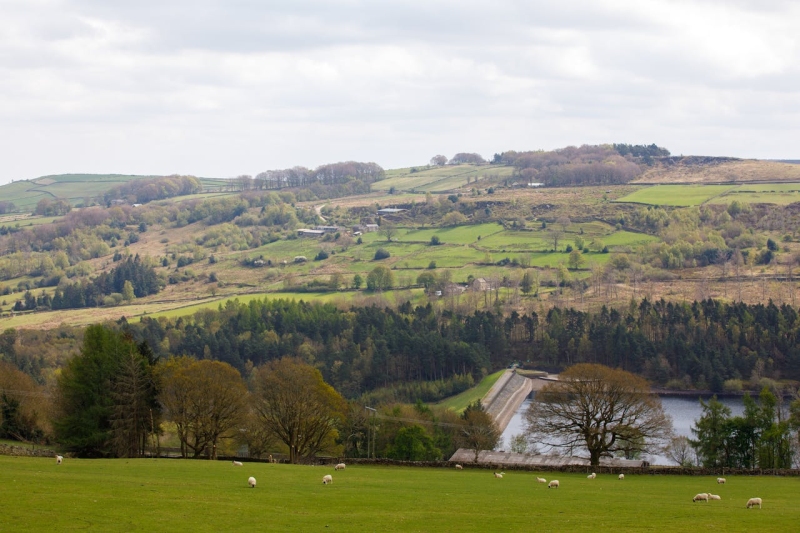We look below at Beeches Capital v Hunt [2024] in which the Upper Tribunal exercised its power to modify a restrictive covenant under section 84 of the Law of Property Act 1925, to enable a redevelopment of previously agricultural land to proceed, subject to the payment of a modest amount of compensation.
The case serves as a useful reminder of the ability to seek the modification of restrictive covenants, which might be a particular option for rural and agricultural landowners wishing to convert to business, residential or other uses.
WolfBite - the key takeaways
• Transfer deeds sometimes contain restrictive covenants that restrict what the buyer and their successors can do with the land, for the benefit of neighbouring properties.• Such restrictive covenants can be an obstacle to redevelopment.
• One option for a landowner subject to a restriction who wishes to do something that might breach the covenant, is to apply to the Upper Tribunal to discharge or modify the covenant.
• There are various Grounds on which discharge or modification can be sought, the most commonly relied on being that the restriction impedes some reasonable use of the land.
• In Beeches Capital, the tribunal refused to discharge a covenant whose purpose was to protect the visual impact of buildings on the subject land, but modified the covenant to enable a sympathetic redevelopment scheme to proceed subject to the payment of a modest payment to compensate for a marginal loss of amenity.
• The case is a good example of the tribunal balancing the competing interests of landowners.
What are restrictive covenants?
When a landowner sells part of their land, they can impose a covenant that restricts how the sold land can be used.For example, such a covenant might restrict the future use of that land to residential use only, prohibit particular business uses or limit the size or number of buildings that can be constructed on that land.
The land that is subject to the restrictive covenant is called the burdened (or servient) land.
The land that benefits from the covenant is called the benefitting (or dominant) land.
In many cases, restrictive covenants can be enforced not only as between the original contracting parties (the original buyer and seller) but also as between future owners of the benefitting and burdened land.
If the owner of the burdened land does something in breach of the restrictive covenant (for example, if they build 10 houses when the covenant restricts the number to a single house), the owner of the benefitting land can enforce the covenant by seeking an injunction.
The owner of the burdened land has several options where it seeks to avoid or guard against the risk of enforcement action.
They can, for example, try to secure an express release from the benefitting landowners, take out indemnity insurance or seek a declaration from the Court as to the scope, extent and enforceability of the covenant.
One of the main options, however, is to apply to the Upper Tribunal (UT) under section 84 of the Law of Property Act 1925 (LPA 1925), to discharge or modify the restrictive covenant.
Section 84 application to discharge or modify a restrictive covenant
The UT has a discretionary power to discharge or modify a restrictive covenant if satisfied that one of the following grounds under section 84(1) of the LPA 1925 applies:
Ground (a) – the covenant ought to be deemed to be obsolete by reason of changes in the character of the burdened land, the surrounding neighbourhood or other material circumstances.
Ground (aa) – the covenant impedes some reasonable use of the land and does not secure to those entitled to the benefit of it any practical benefit of substantial value or advantage (or is contrary to the public interest), and money would be adequate compensation for the loss or disadvantage (if any) that anyone will suffer from the discharge or modification.
Ground (b) – the benefiting landowners expressly or impliedly agree.
Ground (c) – the proposed discharge or modification would cause no injury to those with the benefit of the restriction.
What were the issues in Beeches Capital v Hunt?
The subject land is situated on the outskirts of Tring in Hertfordshire, just inside the Chilterns National Landscapes area of outstanding natural beauty.
Broadly, the land originally comprised a large house to the west and land with a few small agricultural outbuildings to the east, separated by a large field.
In 1959, the owner sold off the part of the land to the east containing the outbuildings, whilst retaining the house and field.
The 1959 conveyance contained a restrictive covenant for the benefit of the seller and their successors in title, that the buyer and their successors would not erect any building or structure on the burdened land “…other than buildings designed and to be used for agricultural purposes and being of a height of not more than seven feet to the eaves and twelve feet to the ridge”.
In 1973, the existing outbuildings were demolished and two large hen rearing houses were erected, known as shed A and shed B.
The height of the two sheds exceeded the height restriction in the restrictive covenant.
Ownership of the burdened land changed hands several times over the following decades, and the use of the land also changed along the way.
Shed A was partially converted into offices and storage in 1999 and, whilst that use stopped for a few years from 2005, it resumed again in 2016 and continued in that use.
The owners of the burdened land obtained planning permission in May 2022 to replace the roofs of the sheds and install full height windows between sections of black stained larch cladding on the outside walls. This scheme was referred to as the “Conversion Scheme”.
In October 2022, planning permission was secured for an alternative proposal, called the “Redevelopment Scheme”. This alternative scheme would involve demolishing the sheds and constructing two new single-storey units broadly on the same footprint that would form a rural enterprise and business hub. The highest point of the new buildings would be slightly taller than the existing sheds, but the gross external floor area would actually be slightly reduced. The local planning authority attached conditions to the planning consent for the Redevelopment Scheme. The planning conditions covered things like the materials to be used, parking, lighting, surface water drainage and, importantly, landscaping.
The existing site was enclosed by close boarded timber fencing, which would be removed under either Scheme.
The removal of the fence would expose the buildings on the burdened land so that two sides would face out into the field owned by the owner of the benefitting land.
In December 2023, the owner of the burdened land applied to the UT seeking to discharge or modify the restrictive covenant under
Grounds (a), (aa) and (c), to enable it to proceed with the Redevelopment Scheme.
What was the burdened landowner’s position?
The owner of the burdened land argued that the restriction should be deemed obsolete under Ground (aa) because the land and its use had altered significantly since 1959.
The existing sheds already exceeded the height restriction, windows had been fitted in 1999 that already looked out over the field, and the agricultural use had stopped over 20 years ago.
The character of the neighbourhood had also changed, with the development of a new industrial estate a short distance away, a new bypass with roundabouts and some 226 new residential houses being built to the south.
The burdened landowner therefore said that the objective of the covenant was to prevent use other than for agricultural purposes, and this objective could no longer be achieved.
Alternatively, they argued that the Redevelopment Scheme would not cause any injury such that the restriction should be discharged under Ground (c) or, if the tribunal determined that the restriction did still secure some limited benefit then any injury could be compensated by a small amount of monetary compensation under Ground (aa).
What was the benefitting landowner’s position?
The owner of the benefitting land did not object to the Conversion Scheme, which they accepted was in line with the restrictive covenant.
However, they considered that, even though planning permission had been granted for the Redevelopment Scheme, that scheme would not be a reasonable use of land in an agricultural area within the Chiltern area of outstanding natural beauty.
They viewed the Redevelopment Scheme as being unsympathetic in scale and design that would be visually intrusive, lead to intensification of business use and be the first stage of urbanisation on that side of the road. It might also increase the risk of future development proposals, including for residential purposes.
They argued that if the restrictive covenant was discharged or modified they would suffer a loss of enjoyment of the field due to being overlooked by people looking out from the office buildings, and loss of tranquillity due to increased noise, cars, light pollution and general activity. The restrictive covenant, they said, remained of substantial advantage to them in terms of being able to prevent this loss of amenity.
The benefitting landowner considered that the original purpose of the restriction was to restrain the size and type of buildings, and that that purpose continued to be achieved. The covenant was therefore not obsolete under Ground (a).
Nor, they said, should the restriction be discharged or modified under Ground (aa) or (c), because the restriction still secured many practical benefits of substantial advantage, and any loss could not be compensated by money.
The benefitting landowner’s expert valuer accepted that the Redevelopment Scheme would not cause any loss of market value to the house or the field.
What did the Upper Tribunal decide?
Ground (a)So far as Ground (a) was concerned, the tribunal found that the purpose of the covenant was to control the appearance of the buildings on the burdened land, not the use of those buildings.
Having conducted a site visit, the UT did not consider that the character of the buildings on the burdened land had changed from that
envisaged by the restrictive covenant.
The restriction continued to achieve the purpose for which it was imposed, namely to protect the appearance of the buildings for the benefit of the neighbouring land given the agricultural character of the area in an area of outstanding natural beauty.
The restrictive covenant was therefore not obsolete.
The application under Ground (a) accordingly failed.
Ground (aa)
It was accepted that the Redevelopment Scheme would be a reasonable use of the land, and that that use would be impeded by the restrictive covenant.
The question, therefore, was whether the restriction still secured any practical benefit of substantial value or advantage and whether money would be adequate compensation for the loss or disadvantage if the restriction was discharged or modified.
The UT considered that the restriction constrained the type of building that would be visible to the owners of the benefitting land.
That was the practical benefit to them. That benefit was not, however, substantial.
The removal of the close boarded fence around the site would expose the benefitting landowners to the full visibility of the
Redevelopment Scheme (or the Conversion Scheme), but only until any new planting carried out in compliance with the planning conditions matured in 10 to 15 years’ time.
The tribunal was required to consider the local development plan. The local planning policy had changed considerably in the 65 years since the restriction was imposed and the Council clearly found the transition to non-agricultural use to be acceptable.
Taking everything together, the UT did not consider that it would be appropriate to discharge the restriction altogether. The original purpose - of controlling the appearance of the buildings on the land - still existed.
However, the tribunal concluded that modifying the restriction to permit the Redevelopment Scheme with the 17 planning conditions attached (including as to landscaping), was a more appropriate and measured step that would neither preclude, nor set a precedent for, any future planning application the land. Any future development would therefore still be subject to the restrictive covenant and would have to be judged on its own facts and circumstances.
The UT found that the owners of the benefitting land would suffer a marginal loss of amenity until the tree planting reached maturity.
It was still possible to assess compensation for the loss of amenity even though that loss could not be quantified by any reduction in the market value of the house and field. The UT determined that a sum of £15,000 would be adequate compensation for the marginal loss of amenity, which equated to approximately £2,000 per acre for a loss of enjoyment of their 7.25-acre field.
The restriction did not secure any practical benefit of substantial advantage, and the marginal loss of amenity as a result of the modification could be compensated by a modest payment of money.
The restriction was accordingly modified under Ground (aa) to permit the Redevelopment Scheme.
Ground (c)
This Ground was not made out because it was found that the modification of the restrictive covenant would cause injury, albeit slight.
Comment
This decision is a useful example of how the tribunal can seek to balance the rights of competing landowners.In this case, the UT was prepared to modify a restrictive covenant to allow a more sensitively thought-out scheme to proceed, whilst leaving the covenant in place so that it might still protect against a more visually intrusive development in the future.
Such applications may be particularly relevant to rural land, and previously agricultural land that now finds itself near to the edge of a growing town. Restrictive covenants are commonly found on the title to such land, and the pressure to transition away from agricultural use, for example to convert to rural business parks or storage space, often brings the owner into conflict with neighbours with the benefit of the restriction.
The case also demonstrates the critical importance of identifying the purpose of the restrictive covenant, and how the owner of the burdened land can design a scheme with that purpose firmly in mind to reduce the risk of a disagreement arising or put itself in the best position should a dispute materialise.
Each case will, however, turn on its own facts.
Please get in touch with our Development or Agricultural and Rural team if your land benefits from, or is burdened by, a restrictive covenant and you would like to discuss your options.





